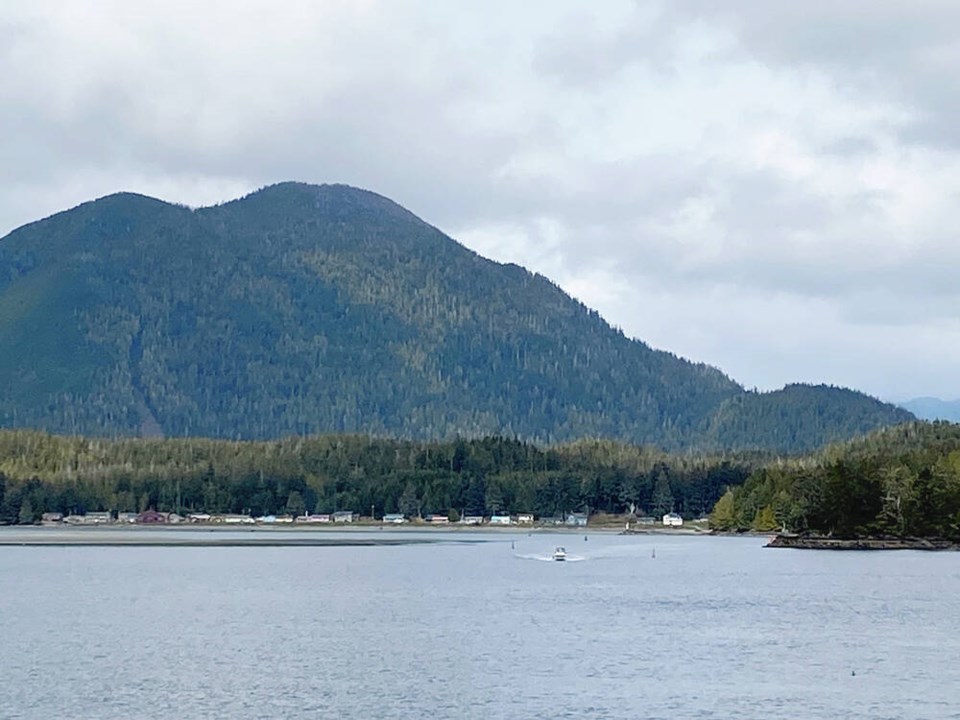The province is seeking public input on proposals to protect 77,000 hectares of old-growth forest around Clayoquot Sound — about 70 per cent of which is more than 250 years old.
The area is currently authorized for commercial forestry as part of Tree Farm Licence 54.
Approval of the protection plan would mean the forests would be in conservation areas, or conservancies, covering almost 60 per cent of TFL 54 — the only one in the vicinity of Clayoquot Sound.
Another 55,000 hectares would remain within forest tenures where trees can be harvested.
The Ahousaht and Tla-o-qui-aht First Nations and the province have been collaborating on a plan for Clayoquot Sound since September 2020.
TFL 54 is managed by MaMook Natural Resources Ltd. — a partnership involving the Ahousaht, Tla-o-qui-aht, Hesquiaht, Toquaht and Ucluelet First Nations.
The province said that commercial logging, mining and hydroelectric-power generation, other than local run-of-river projects, would be prohibited within the conservancies — described by the Ministry of Forests as Crown lands set aside under the Park Act.
“We’ve been working on this for a long time, so it feels really good to finally take some big steps,” said Saya Masso, Tl-o-qui-aht natural-resources manager.
He said the nation has also worked to protect old growth within its territory in what it calls “tribal parks,” including one established at Kennedy Lake in 2008.
In 2014, the Tla-o-qui-aht declared their entire homeland a tribal park “to crystallize our vision of where we want to go,” he said.
The nation’s tribal parks started in 1984 on Meares Island in response to clear-cut logging, with the intent of advocating for the preservation of the coastal forest and waters, as well as Tla-o-qui-aht culture.
“Our culture can’t survive on second-growth forests,” said Masso, explaining that old-growth forests provide the type of trees needed for carving things such as totem poles, dugout canoes and longhouse beams.
“We are protecting this old growth for our grandchildren, for their future use.”
Some economic activity could take place within the proposed conservancies, including tourism, Masso said.
Economic activities within conservancies can include such things as cultural tourism and guided hiking, the ministry said.
Masso said the hope is to have the conservancies finalized in the summer. Public comment will be received until April 10.
Meanwhile, Hornby Island’s Tribune Bay Park is among six provincial parks and one conservancy that will be expanded through new legislation.
Tribune Bay Park will grow by 10 hectares and will also get three additional hectares of marine foreshore that include the area’s last remaining beachfront property, as well as an existing private campground with 135 campsites.
Other expansions will be at Muncho Lake Park near Fort Nelson, Edge Hills Park near Clinton, Valhalla Park near Slocan, Purcell Wilderness Conservancy Park near Kaslo, Mount Pope Park near Fort St. James and the Taku River/T’aḵú Téix̱’ Conservancy near Atlin.
To participate in the public-engagement process for Clayoquot Sound, visit https://engage.gov.bc.ca/govtogetherbc/engagement/clayoquot-sound-conservancies/.
For more on the Clayoquot Sound area, visit https://www2.gov.bc.ca/gov/content/industry/crown-land-water/land-use-planning/regions/west-coast/clayoquot-sound-watershed-plans.
>>> To comment on this article, write a letter to the editor: [email protected]



